PHP isn’t going anywhere, and its top frameworks are doubling down on speed, structure, and scalability. While established names like Laravel and Symfony remain dominant, newer options such as Spiral and Hyperf are rising in popularity due to performance and asynchronous capabilities.
Below is an updated list of what I consider to be the top 10 PHP frameworks today, balancing popularity, stability, performance, modern features, and ongoing maintenance. Each entry includes a brief description, key strengths, notable limitations, and its status as of mid-2025.
Laravel
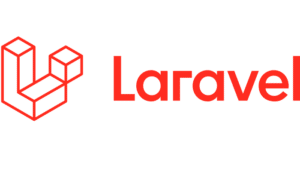
Laravel continues to reign as the most popular PHP framework. It’s a full-stack MVC framework suitable for everything from small startups to large enterprise apps. Laravel emphasizes rapid development with features like an expressive ORM (Eloquent), a powerful templating engine (Blade), and an extensive package ecosystem.
- Key Strengths: Huge community and ecosystem of packages, clear and expressive syntax, and a wealth of built-in features for common tasks. Laravel’s tooling (Artisan CLI for code generation, Horizon and Telescope for monitoring, etc.) streamlines development and deployment. Excellent documentation and learning resources support beginners and experts alike.
- Notable Limitations: Laravel’s rich feature set can make it a relatively heavy framework for simple projects, and it has a steeper learning curve than some lightweight frameworks. Applications may require more resources (memory, CPU) compared to micro-frameworks. Also, strict adherence to Laravel conventions is expected, which can require learning Laravel-specific approaches.
- Maintenance & Popularity (2025): Very high. Laravel is actively maintained (currently on version 12 with long-term support) and has a massive user base. It dominates PHP framework usage by a large margin.
Symfony
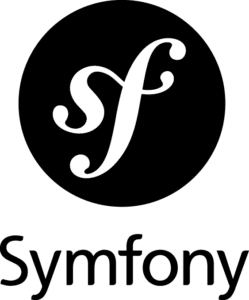
Symfony (maintained by SensioLabs) is known for its stability, flexibility, and extensive reusable component library. It provides a solid foundation for large-scale systems, and many other projects (including Laravel and Drupal) build on Symfony components. Symfony’s emphasis on best practices and its optional full-stack or component-based usage make it ideal for high-complexity projects.
- Key Strengths: Highly flexible and customizable architecture. Symfony is built from decoupled components, so developers can use it as a full framework or cherry-pick individual components. It excels at robustness and scalability for big applications, with built-in features for caching, translation, form handling, and more.
- Notable Limitations: Symfony is considered more difficult for beginners than frameworks like Laravel. Its learning curve is steeper due to the need to understand its many configuration options and concepts (services, dependency injection, etc.). Also, a default Symfony installation can have a lot of boilerplate, which means somewhat higher memory usage and performance overhead out-of-the-box. In short, it trades initial simplicity for flexibility, which can slow down small projects.
- Maintenance & Popularity (2025): High. Symfony remains one of the top PHP frameworks, especially in enterprise contexts. It has a large, active community and millions of downloads. The core team regularly releases new versions and security updates. Symfony’s long-term support releases and professional support options ensure it’s a safe choice for mission-critical projects in 2025.
CodeIgniter
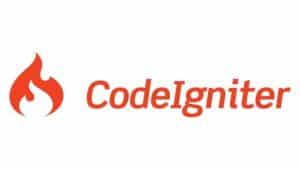
Known for its speed and footprint (about 2 MB in size including documentation), CodeIgniter is a veteran framework (initially released in 2006) that has managed to stay relevant by being easy to learn and extremely efficient. Its latest major version (CodeIgniter 4) modernized the platform (with PHP 7/8 support and a rewrite of many core parts) while retaining a tiny footprint. CodeIgniter is well-suited for small-to-medium projects or APIs where minimal overhead and quick setup are priorities.
- Key Strengths: Its core codebase is very small, which leads to excellent performance and low resource usage. CodeIgniter imposes few constraints; while it encourages MVC, it does not force it, giving developers flexibility. It’s often praised for being beginner-friendly – the framework is easy to set up (just drop the files on a server), with simple routing and a straightforward API. Comprehensive documentation and an intuitive library of helper functions allow rapid development without steep learning curves.
- Notable Limitations: CodeIgniter has fewer built-in features than most other frameworks. You may need to write more functionality from scratch or add third-party libraries. The framework’s release cycle has been slower and more irregular than others, which in the past raised concerns about long-term viability. The ecosystem of extensions is smaller than Laravel or Symfony.
- Maintenance & Popularity (2025): Moderate and stable. CodeIgniter is actively maintained by a community team. While it’s not the trendiest framework, it maintains a strong user base thanks to its simplicity.
CakePHP

CakePHP is one of the older PHP frameworks (first released in 2005) and was inspired by Ruby on Rails. It provides an opinionated structure and scaffolding that allow developers to build applications quickly, provided they follow CakePHP’s conventions. With features like the Bake command-line tool for code generation and built-in CRUD functionality, CakePHP is designed to get projects off the ground fast.
- Key Strengths: Convention-based structure. Includes many features out-of-the-box: an ORM, form validation, authentication, caching, etc. The Bake CLI can generate models, controllers, and views, accelerating development. Strong security features (SQL injection, CSRF, XSS protection).
- Notable Limitations: The strict conventions that give CakePHP its speed can also feel restrictive. Smaller ecosystem and fewer ready-made packages. May not be as lightweight or fast as micro-frameworks.
- Maintenance & Popularity (2025): Moderate. CakePHP is actively maintained with a loyal community, though its popularity has declined. Still a viable and secure framework.
Yii

The name Yii stands for “Yes It Is!” and this framework has a reputation for being fast, thanks to its efficient core and lazy loading techniques. Yii is a full-stack framework like Laravel or Symfony, coming with an ActiveRecord ORM, powerful caching support, and a host of built-in tools. It’s often chosen for projects that need to handle high traffic or for developers who want a solid set of features without relying on many external packages.
- Key Strengths: Excellent performance, strong security measures, elegant caching support, and code generator tools. The Gii tool allows rapid CRUD generation. Yii is extensible and well-supported by documentation and community forums.
- Notable Limitations: Steeper learning curve and smaller ecosystem compared to Laravel. Yii 2 is still the stable version; Yii 3 is under slow development, which can be a concern for forward-looking projects.
- Maintenance & Popularity (2025): Moderate. Yii 2 is maintained with ongoing bug fixes. Yii remains relevant but less prominent than in its early years.
Laminas

Laminas is the successor to the Zend framework – the latter was a dominant PHP framework in the late 2000s and 2010s, and in 2019 it was rebranded and handed over to the Linux Foundation. Laminas retains all of Zend’s powerful, modular components for things like authentication, forms, database abstraction, and more
It’s less of a traditional “full-stack framework” and more a collection of building blocks (plus an MVC skeleton if you want). This makes Laminas extremely flexible and a top choice for enterprise projects that require long-term stability and customization.
- Key Strengths: Modular and customizable architecture, PSR-compliant, and backed by years of Zend framework development. Suitable for teams that need highly tailored architecture and enterprise stability.
- Notable Limitations: Steep learning curve, verbose setup, and smaller community compared to Laravel or Symfony. Not ideal for simple projects.
- Maintenance & Popularity (2025): Moderate. Laminas is actively maintained under the Linux Foundation and used in many large-scale systems.
Phalcon
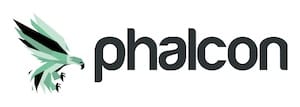
Phalcon is unique among PHP frameworks because it isn’t written in PHP – it’s written in C and C++, and it’s installed on a server as a PHP extension. This architecture allows Phalcon to offer great performance (essentially skipping a lot of PHP’s runtime overhead) while providing a high-level MVC framework to developers. Phalcon includes its own ORM, template engine, and other typical framework components, all optimized at the C level.
- Key Strengths: Extremely fast, low memory usage, includes its own templating engine (Volt), and provides built-in components like ORM, caching, and security tools.
- Notable Limitations: Requires installation as a server extension, which can limit deployment options. Smaller community and infrequent updates may be a concern for some applications.
- Maintenance & Popularity (2025): Niche but active. Phalcon continues to be used for performance-critical applications.
Slim
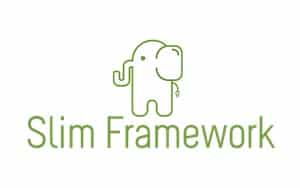
Slim is a lightweight framework that provides only the essential features needed to build a web application: a router, middleware support, and a few simple helpers for things like HTTP responses. It does not come with an ORM or template engine (you can integrate your own).
Because of its slim nature, it’s easy to learn and very fast. Slim is often compared to frameworks like Express.js (in Node.js) – it’s focused on being simple and enabling quick creation of RESTful APIs.
- Key Strengths: Easy to learn, lightweight, and fast. Slim has no third-party dependencies and supports PSR-7 and PSR-15 standards, making it highly compatible with middleware-based architectures.
- Notable Limitations: Lacks full-stack features. For complex apps, developers must integrate external packages. Less suited for large-scale projects without manual structure enforcement.
- Maintenance & Popularity (2025): High in the API/microservice niche. Slim is actively maintained and a go-to for lightweight web services.
Spiral Framework

Spiral is a full-stack framework built to work with an async PHP runtime called RoadRunner (a PHP application server written in Go). By running PHP code in a persistent process, Spiral can handle requests much faster than traditional PHP (which boots and tears down the framework on every request). This makes Spiral well-suited for real-time applications, microservices, or any scenario requiring high throughput.
- Key Strengths: Async-ready, performance-optimized, supports GRPC, queues, DI container, and real-time workflows. Built for high-concurrency scenarios.
- Notable Limitations: Requires RoadRunner and knowledge of async programming. Niche and best suited for advanced use cases.
- Maintenance & Popularity (2025): Growing. Spiral is under active development and gaining traction for high-performance needs.
Hyperf
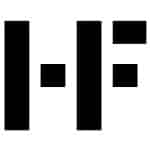
Hyperf is another newer framework (launched in 2019) that has surged in popularity, particularly in East Asia, and is now gaining notice globally. It’s built on the Swoole extension, which means it uses coroutines and event loops to allow asynchronous, non-blocking execution in PHP.
- Key Strengths: Supports coroutine-based async workflows, modular structure, AOP, RPC, and high-concurrency tasks. Ideal for real-time and distributed applications.
- Notable Limitations: Requires Swoole, steeper learning curve, and most community activity is centered in Asia.
- Maintenance & Popularity (2025): High in Asia, growing globally. Hyperf is actively maintained and considered a future-forward framework for modern PHP infrastructure.
FAQs
What is a PHP framework?
A PHP framework is a platform to build PHP web applications. PHP frameworks provide libraries for commonly used functions, which helps to cut down on the amount of original code developers need to write from scratch.
A PHP framework provides a basic foundation for the development of web applications in PHP. Frameworks are useful because they speed up and standardize the development process, reducing doubts about how to start building an application.
Why use a PHP framework?
There are several reasons for using PHP frameworks compared to coding from scratch:
- Faster development - The time required for development is much less because of built-in libraries and tools.
- Better performance - Since frameworks are thoroughly tested for quality and performance, using PHP frameworks helps businesses meet their performance needs.
- Less code - The need to write original code is reduced when using functions built-in to frameworks.
- Libraries for common operations - Many tasks that developers need to perform when building applications can be repetitive e.g. validation, data cleaning and CRUD operations. Frameworks allow performing such common tasks using built-in functions.
- Following best practices - PHP frameworks usually follow best-practices e.g. they organize code in a clean and maintainable way and follow good naming conventions.
- More secure - Using PHP frameworks minimizes chances of exploits such as cross-site scripting and SQL injection. Good PHP frameworks have built-in defenses against such common threats.
- Enable teamwork - Using frameworks sets clear rules for projects, enabling developers to pick them up quickly and work collaboratively.
- Better maintainability - PHP frameworks help create a leaner and more maintainable codebase. Also, the maintenance of the core framework itself is taken care of by the developers of the framework.
What is the best PHP framework for beginners?
Generally, simpler and leaner frameworks that are easy to understand are ideal for beginners. Once these are mastered, developers can advance to more feature-packed frameworks if needed.
CodeIgniter is the top choice for a beginner-friendly PHP framework that is easy to use and quick to learn. It works on the MVC architecture, is easy to install, offers several guides and is easy to understand for beginners to get started with developing web applications on PHP.
Track, Analyze and Manage Errors With Rollbar
Managing errors and exceptions in your code is challenging. It can make deploying production code an unnerving experience. Being able to track, analyze, and manage errors in real-time can help you to proceed with more confidence. Rollbar automates error monitoring and triaging, making fixing PHP errors easier than ever.



